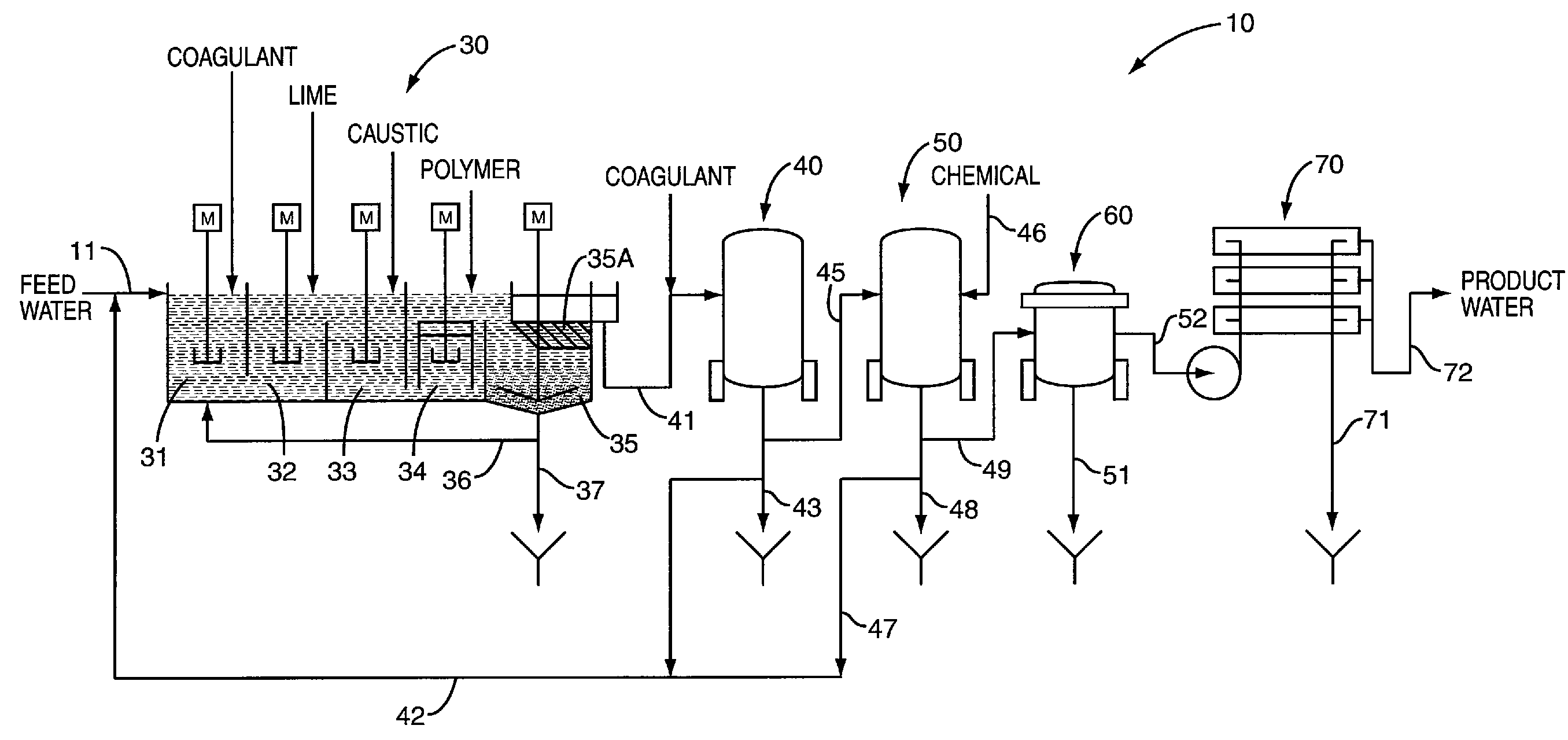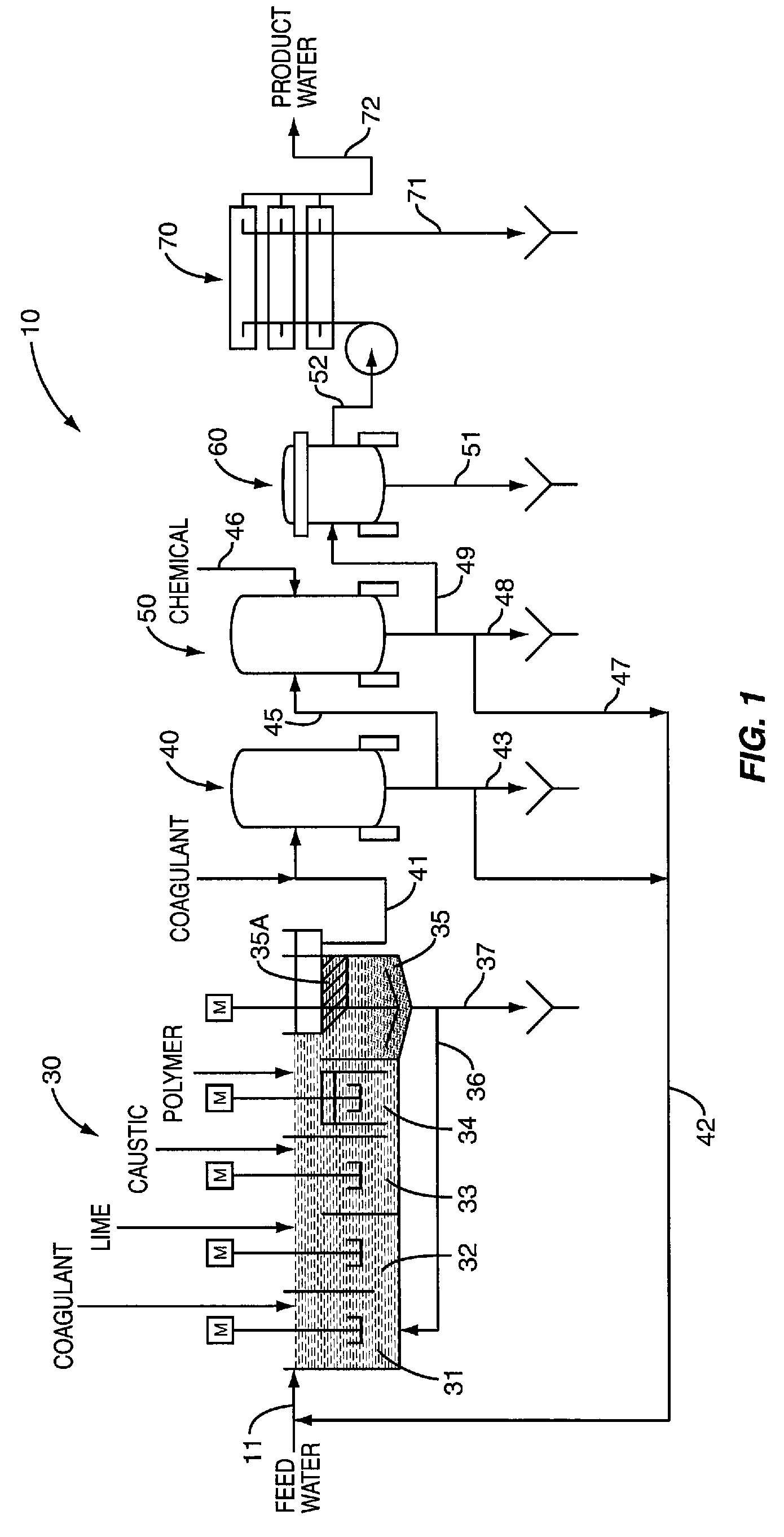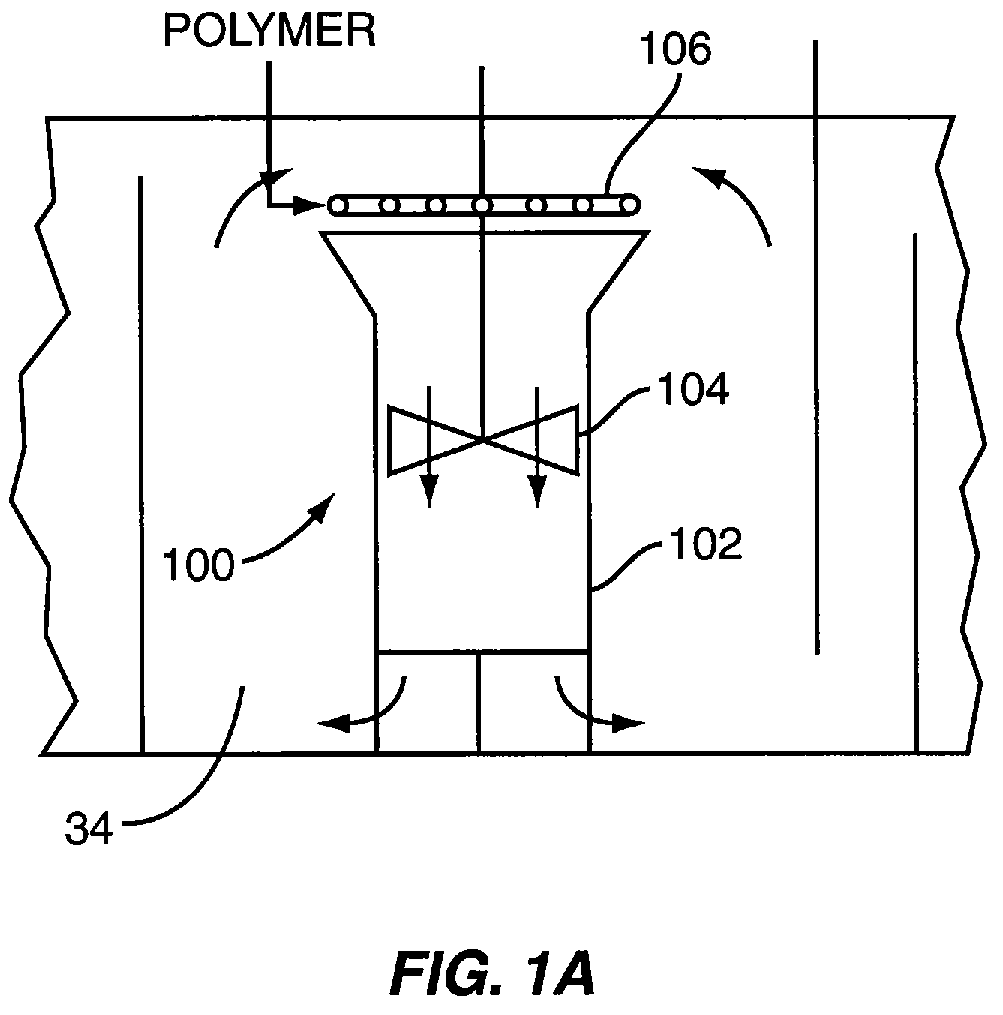Method for treating wastewater or produced water
a technology for producing water and wastewater, applied in multi-stage water/sewage treatment, membranes, nature of treatment water, etc., can solve the problems of reducing the recovery rate of reverse osmosis systems, affecting the recovery rate of wastewater, so as to reduce the concentration of silica, reduce the concentration of total dissolved solids, boron, and silica in the feed water.
- Summary
- Abstract
- Description
- Claims
- Application Information
AI Technical Summary
Benefits of technology
Problems solved by technology
Method used
Image
Examples
Embodiment Construction
[0014]The present invention relates to a wastewater treatment process for treating wastewater or producing water that contains organics, silica, boron, dissolved solids and suspended solids. Various types and forms of wastewater may contain these contaminants. For example, in the petroleum industry, produced water discharged from oil recovery operations typically includes these contaminants. Treatment of such produced water to meet government discharge regulations is challenging. As used herein the term “wastewater” broadly means an aqueous stream that includes contaminants to be renewed by treatment, and includes, for example, produced water, surface water and well water.
[0015]As described subsequently herein, the process of the present invention entails chemically softening and clarifying the wastewater in a process that removes hardness, and through a clarifier, removing suspended solids and precipitants. There after the wastewater is subjected to further filtration and softening...
PUM
| Property | Measurement | Unit |
|---|---|---|
| solubility | aaaaa | aaaaa |
| solubility | aaaaa | aaaaa |
| pH | aaaaa | aaaaa |
Abstract
Description
Claims
Application Information
 Login to View More
Login to View More - R&D
- Intellectual Property
- Life Sciences
- Materials
- Tech Scout
- Unparalleled Data Quality
- Higher Quality Content
- 60% Fewer Hallucinations
Browse by: Latest US Patents, China's latest patents, Technical Efficacy Thesaurus, Application Domain, Technology Topic, Popular Technical Reports.
© 2025 PatSnap. All rights reserved.Legal|Privacy policy|Modern Slavery Act Transparency Statement|Sitemap|About US| Contact US: help@patsnap.com



